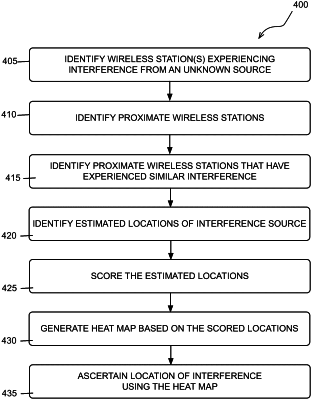| CPC G01S 5/0215 (2013.01) [G01S 5/0081 (2013.01); H04B 17/336 (2015.01); H04W 24/10 (2013.01); H04W 64/003 (2013.01); H04W 72/541 (2023.01)] | 20 Claims |

|
1. A method, comprising:
determining that an unknown radio frequency (RF) interference source that causes RF interference experienced by a first wireless station is a persistent RF interference source over a plurality of time intervals in a selected time period;
identifying a predicted interference source location for each time interval in the selected time period; and
calculating an aggregated predicted interference source location based on the identified predicted interference source locations.
|